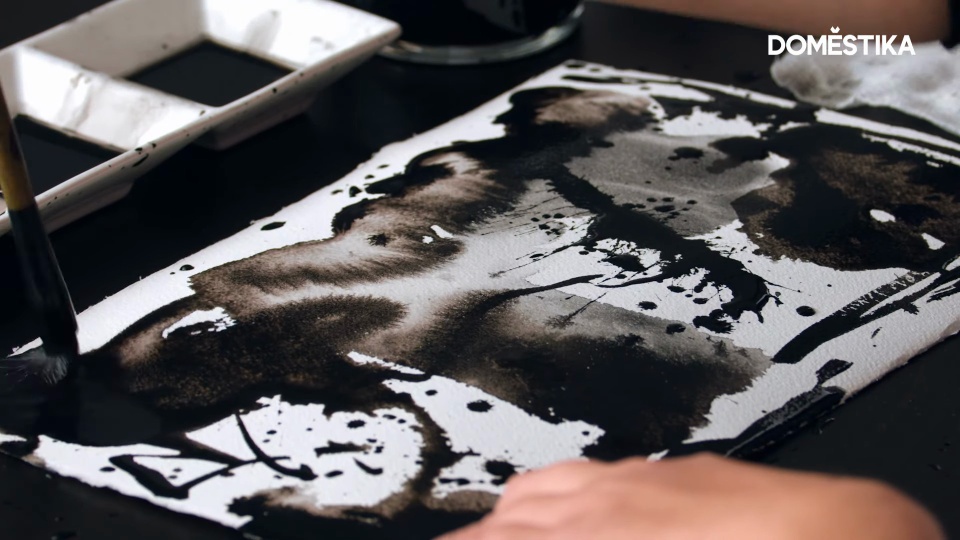Illustration Tutorial: the sumi-e technique through stain exercises

Mika Takahashi teaches the possibilities of Indian ink and the reaction of paint to water on different types of paper
Created more than 2,000 years ago, Indian ink is made up of carbon nanoparticles that cause a unique effect on paper. Illustrating with this material is more than a means of creative expression; The possibilities are endless and unpredictable. In this tutorial, Mika Takahashi, award-winning artist and illustrator, shows us how to explore the possibilities of Indian ink to create mesmerizing stains:
How to Create India Ink Stains on Watercolor Paper
To start, you will need a small bowl of water and another of India ink, as well as watercolor paper. Choose old clothes that can get stained. If necessary, protect the table and surrounding furniture with an old cloth, also to prevent stains. An important rule: don't cut yourself, get dirty. All the creative potential of this technique resides precisely in “dirt”.

Apply the water delicately, with a brush, onto the watercolor paper, creating small wet areas. Next, dip the brush in the Indian ink and apply it to that moisture, observing how it behaves and the different types of stains it forms. Experiment with various ways of application, waving the brush a few centimeters above the paper or directly touching the paper.

The more water you use, the larger the stain will be. And, if there is more pigment, the stain effect tends to be stronger.

How to create stains and textures on drawing paper (Bristol)
In addition to watercolor paper, drawing paper (Bristol) is a good option for working with Indian ink. You can do this by dipping a cotton ball into the ink and applying it to create a stain effect that is very different from the brush.

Also experiment with gauze pads or a piece of plastic bag, for example. Each material allows a very specific effect, texture and density of the ink on the paper, which favors the creative process. There are no limits to this technique, it will be your creativity that determines the best path.

Take risks with different materials and analyze the results to understand which one you like best and how you obtained it.
Digitize the stains that you like the most
Whenever you finish painting, digitize the result and keep a file with all your work. Take note of the materials you have used and record the steps of the process. Thus, you will document more than anything the experiments and learnings. But remember: the results, due to the very essence of this technique, will never be identical.
Did you like this tutorial? Learn with Mika Takahashi to create a composition with Indian ink from start to finish, work with the brush with precision, create contrasts and light and shadow effects and, thus, transmit emotions through traditional methods in his online course 'Illustration in Chinese ink with Japanese influence'.
You might also be interested in:
- Essential materials for Sumi-e painting
- The magical universe of Mika Takahashi
- Materials: Watercolor painting






0 comments